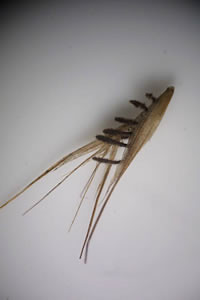The long battle to mitigate and potentially eliminate cheatgrass, one of the American West’s most menacing invasive weeds, has just taken a positive step forward. U.S. Forest Service research, conducted by ecologist Susan Meyer, has demonstrated in field trials that the fungal pathogen known commonly has Black Fingers of Death is very effective in eliminating the cheatgrass carryover seed bank that can come back to haunt a restoration seeding after apparently successful control.

“Biocontrol using naturally occurring fungal pathogens is a novel approach that, while not completely effective when used alone, could provide valuable tools for use in conjunction with other control methods,” said Meyer. “Currently Black Fingers of Death is the most promising biocontrol organism we have, because it can kill dormant cheatgrass seeds.”
Aside from displacing more useful and benign native grass species, cheatgrass, brought in from Europe in the late Nineteenth Century, grows rapidly, dries out quickly and burns intensely.
In fact, it is this “fuel to the fire” aspect of cheatgrass that is partially to blame for the greater intensity of wildland fires especially in more arid regions of the West.
This gruesomely named biocontrol agent now has been advanced to the next stage of development. This includes application technology and initiation of the patent application process through the US Forest Service Patenting and Licensing Program.
At least one biocontrol company has already expressed interest in licensing the product.
